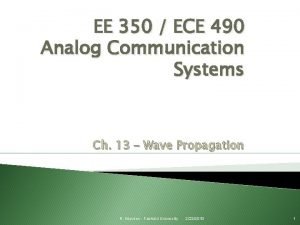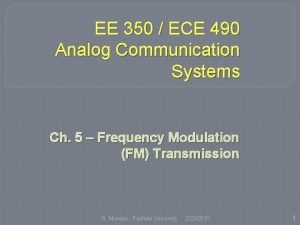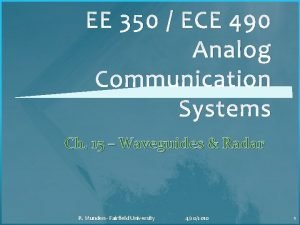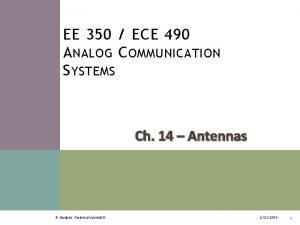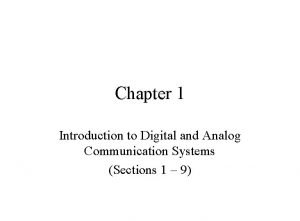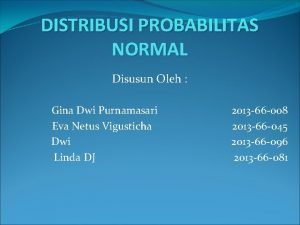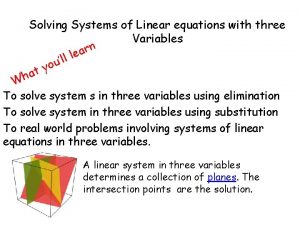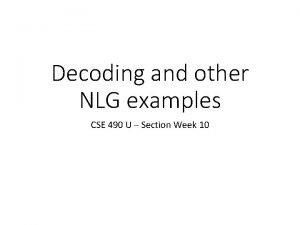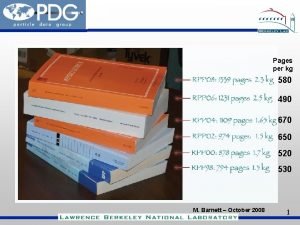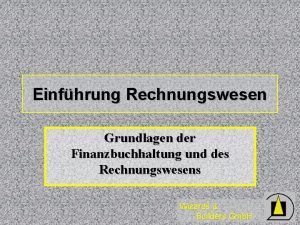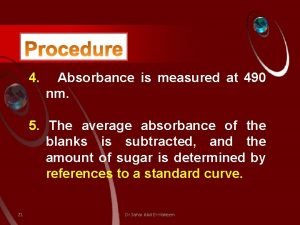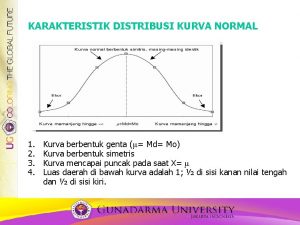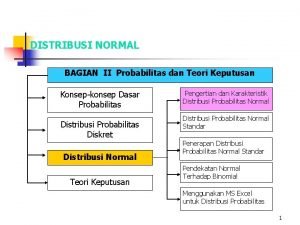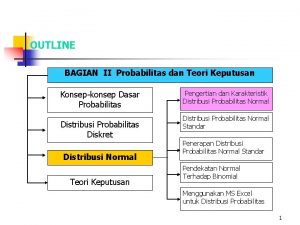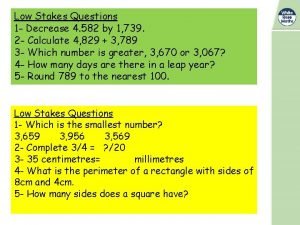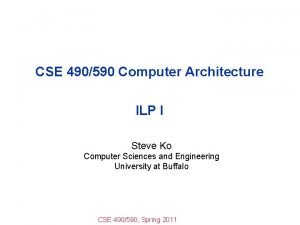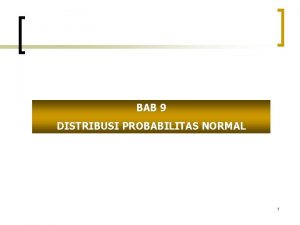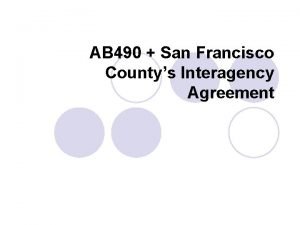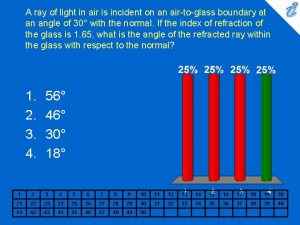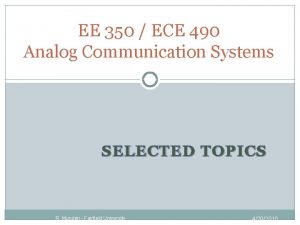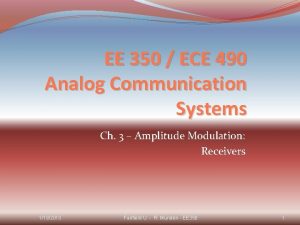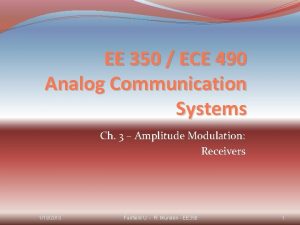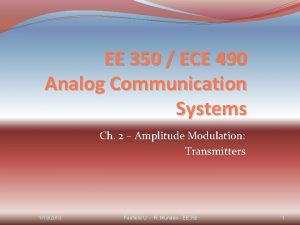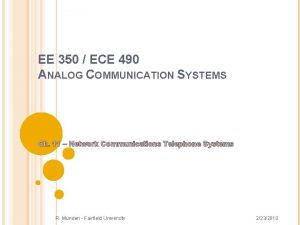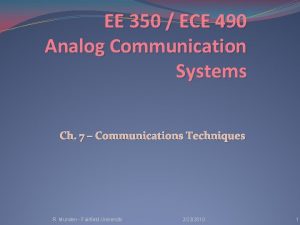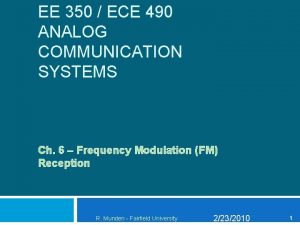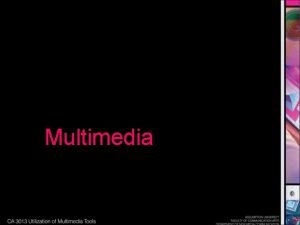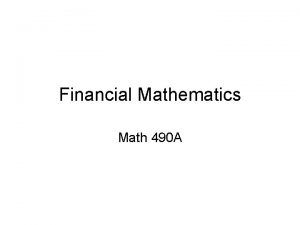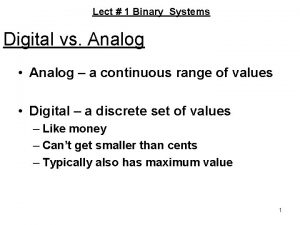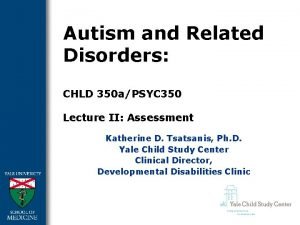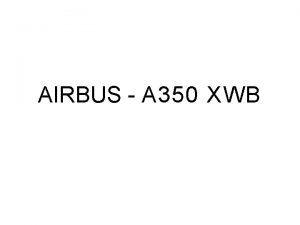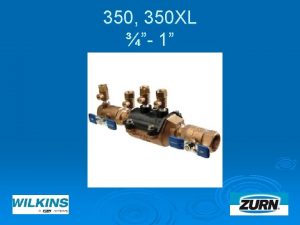EE 350 ECE 490 Analog Communication Systems SELECTED




























- Slides: 28

EE 350 / ECE 490 Analog Communication Systems SELECTED TOPICS R. Munden - Fairfield University 4/20/2010 1

More References �Microwaves 101 – Microwave Encyclopedia – www. microwaves 101. com �Spread Spectrum Scene - http: //sssmag. com/index. html �RF Café - http: //rfcafe. com/ �IEEE societies – Antennas and Propagation, Broadcast Technology, Communications http: //www. ieee. org/societies_communities/societie s/about_societies. html

Smith Chart Program �Freeware tool for calculating Smith Chart values �Resources available online: �RF Café - http: //www. rfcafe. com/references/electrical/smith. htm �Agilent Smith Chart applet http: //education. tm. agilent. com/index. cgi? CONTE NT_ID=5

16 -1 Microwave Antennas �Horn Antennas �Parabolic Reflectors �Lens Antenna �Patch Antenna

Horn Antennas Figure 16 -1 Horn antennas. Provide up to 20 d. Bd of gain, and are very simple to construct.

Parabolic Reflector Figure 16 -2 Location of the focal point for a parabolic reflector. Diameter should be 10 x the wavelength.

Dish Antennas Figure 16 -3 Microwave dish antennas.

Dish Antennas

Figure 16 -4 Polar pattern for parabolic antenna in Example 16 -1.

Radomes

Lens antenna Figure 16 -5 Zoned lens antenna.

Figure 16 -6 Patch antenna.

Patch Antenna

10 -3 Spread-Spectrum Techniques �Modern communication are relying more and more on Spread Spectrum to make more efficient use of a single band, by making many channels within the band.

Figure 10 -17 A 7 -bit sequence generator.

Figure 10 -18 An implementation of a 7 -bit PN sequence generator using Electronics Workbench. TM Multisim.

Figure 10 -19 The serial data output stream for the 7 -bit PN sequence generator.

Figure 10 -20 The PN sequence generator circuit structure for the connections listed in Table 10 -2. The circuit shown is connected with five shift registers (n = 5) and a maximal length of 31.

Figure 10 -21 Frequency hopping spread spectrum.

Figure 10 -22 A simplified RE spectrum for a frequency hopping spread-spectrum signal.

Figure 10 -23 Direct sequence spread spectrum.

Figure 10 -24 An implementation of a DSSS circuit using Electronics Workbench. TM Multisim.

Figure 10 -25 The waveforms for the BPSK output and the PN code.

Figure 10 -26 The DSSS output signal generated by mixing the BPSK output and the PN code.

Figure 10 -27 The DSSS signal input to the receiver and the recovered BPSK data.

Figure 10 -28 The spectrum of the BPSK signal.

Figure 10 -29 The time domain waveforms for the BPSK and PN code outputs using the proper chip modulation rate relationship.

Figure 10 -30 The spectrum of the signal after spreading.
 Ee 350
Ee 350 Ece 490
Ece 490 Ece 490
Ece 490 Ece 490
Ece 490 Analog vs digital communication systems
Analog vs digital communication systems Introduction to analog and digital control systems
Introduction to analog and digital control systems Introduction to digital control system
Introduction to digital control system Diketahui ada dua bilangan bulat berselisih 5
Diketahui ada dua bilangan bulat berselisih 5 Makanan yang disediakan pengusaha ternak selama
Makanan yang disediakan pengusaha ternak selama Tabel distribusi weibull
Tabel distribusi weibull 490 bce
490 bce Persian wars
Persian wars A theater has 490 seats
A theater has 490 seats Raspberry pi lab manual
Raspberry pi lab manual Nlg examples
Nlg examples Pdg-670
Pdg-670 Verlegte inventur
Verlegte inventur Ch 490 study guide
Ch 490 study guide 490 nm to m
490 nm to m Contoh soal probabilitas pendapatan perkapita
Contoh soal probabilitas pendapatan perkapita Teori distribusi normal
Teori distribusi normal Sfu library database
Sfu library database Contoh soal probabilitas teori pengambilan keputusan
Contoh soal probabilitas teori pengambilan keputusan Find the percentage decrease from 490 to 343
Find the percentage decrease from 490 to 343 Cse 490
Cse 490 Cse 490
Cse 490 Pt gs mengklaim rata rata berat buah mangga
Pt gs mengklaim rata rata berat buah mangga Ab 490
Ab 490 A ray of light in air is incident
A ray of light in air is incident
